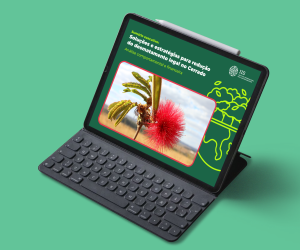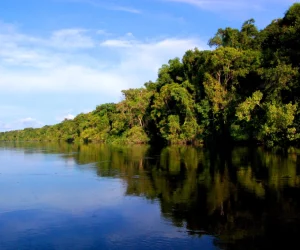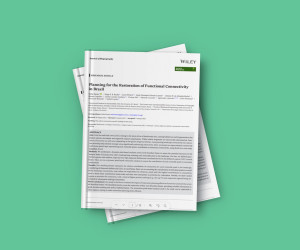News > News
04.07.19
New study reveals that the Atlantic Forest demonstrates the best opportunities for the restoration of tropical forests around the world
Researchers pinpoint restoration hotspots in 15 countries, including Brazil, Indonesia, India and Colombia, across four continents where reviving forests would deliver the biggest carbon, water and wildlife benefits for the buck
In a peer-reviewed report released today, researchers identified more than 100 million hectares of lost lowland tropical rain forests—restoration hotspots— spread out across Central and South America, Africa and Southeast Asia that present the most compelling opportunities for restoration to overcome rising global temperatures, water pollution and shortages, and the extinction of plant and animal life. Brazil, Indonesia, Madagascar, India and Colombia have the largest accumulated area of restoration hotspots; six African countries–Rwanda, Uganda, Burundi, Togo, South Sudan, and Madagascar–are home to the areas presenting the best restoration opportunities on average. “Restoring tropical forests is fundamental to the planet’s health, now and for generations to come,” said lead author Pedro Brancalion, from the University of São Paulo, Brazil. “For the first time, our study helps governments, investors and others seeking to restore global tropical moist forests to determine precise locations where restoring forests is most viable, enduring and beneficial. Restoring forests is a must do–and it’s doable.”
The 12 authors of the Science Advances study, Global restoration opportunities in tropical rainforest landscapes, used high-resolution satellite imagery and the latest peer-reviewed research on four forest benefits (biodiversity, climate change mitigation and adaptation and water security) and three aspects of restoration effort (cost, investment risk and the likelihood of restored forests surviving into the future) to assess and “score” all tropical lands worldwide in 1 kilometer square blocks that retained less than 90 percent of their forest cover. Restoration hotspots are those lands that scored in the top 10 percent, meaning that restoring them would be the most beneficial and the least costly and risky.
- The top 15 countries with the largest restoration hotspots were found across the all tropical forest biomes, or zones: three in the Neotropics, five in the Afrotropics, and seven in Indo-Malaysia and Australasia.
- The five countries with the largest restoration hotspot by area are Brazil, Indonesia, India, Madagascar, and Colombia.
- The six countries with the highest mean score were found in Africa: Rwanda, Uganda, Burundi, Togo, South Sudan, and Madagascar. “We were surprised to find such a concentration of highly ranked countries in a single continent,” co-author Robin Chazdon said. “The study really highlights the high potential for successful rainforest restoration outcomes in these African countries.”
- Nearly 87 percent of the restoration hotspots were found within biodiversity conservation hotspots, areas that hold high concentrations of species found nowhere else, but are at high risk for deforestation.
- The Atlantic Forest was the global hotspot for biodiversity conservation with the largest hotspot area for restoration, highlighting the great opportunity that this biome presents to receive international restoration investments;
- Seventy-three percent of the restoration hotspots were found in countries that have made restoration commitments as part of the Bonn Challenge, a global effort to bring 150 million hectares of the world’s deforested and degraded land into restoration by 2020, and 350 million hectares by 2030. “It’s encouraging that so many hotspots are located in countries where restoring forests and landscapes is already a priority,” said Brancalion.
In most cases, restoration hotspots overlap with fields and pastures currently in use by farmers. As a result, the study shows, restoring forests is most feasible on lands of low value for agricultural production. Alternatively, the researchers argue, restoration could be coupled with income-generating forms of production through, for example, enriching pastures with trees, harvesting forest-based products like rattan and growing coffee or cocoa beneath a forest canopy. Any decisions about changing land use must fully engage local communities, as restoration should complement rather than compete with food security and land rights. In other cases, these hotspots include abandoned, degraded farmlands or government lands.
“Identify restoration hotspots is a critical approach to inform policies and actions related with
forest landscape restoration at large scale,” said Renato Crouzeilles, IIS associated and one of the authors of the study. “It is a big opportunity to combine restoration and conservation actions in a same place as there is more than 85% overlap between areas that fall within both biodiversity conservation and restoration hotspots”








